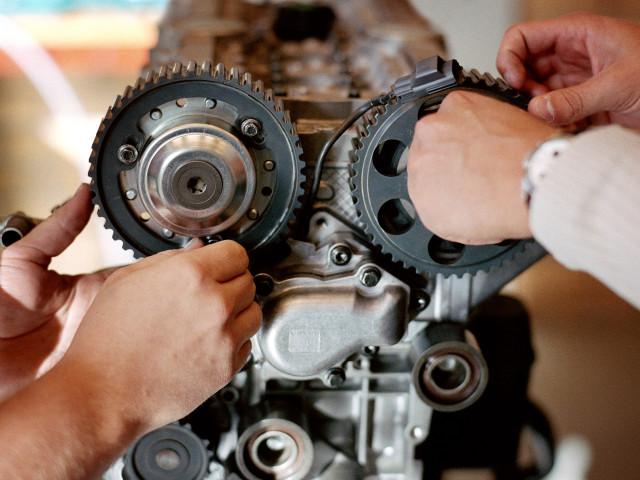The aim of the course is to give the student knowledge of available methods (theoretically and practically) for advanced physical prototype production. The emphasis lies on design and preparation for prototype building and "reverse engineering". Construction and preparation is carry out by means of CAD/CAM softwares and scanning equipment The production is made with 3D printers, milling and water jet machines The manufacturing documentation is based on 2D and 3D digital models. When and what kind of prototypes that are appropriate in the product realisation process is discussed, as well as material aspects and costs. Different material adding FFF (Free Form Fabrication) methods are discussed, their strengths and weaknesses and material removal prototyping equipment.
MF2031 Advanced Prototyping 6.0 credits

The course aims to bring an overview of available methods for advanced prototyping as well as knowledge of practical handling of a selected number of thoose. This means that a large part of the course is assigned to laboration and exercises for preparing for these laborations.
Content and learning outcomes
Course contents
Intended learning outcomes
After passing the course, the student should be able to:
- describe the importance of the prototype in the product realisation process
- describe the relation and the difference between virtual and physical prototypes
- explain when and why a prototype (physical or virtual) is required in the product realisation process
- describe different physical prototype manufacturing methods
- choose prototype manufacturing method based on purpose, cost, material, time and quality
- design 3D CAD models adjusted for prototype production
- build physical prototypes with the aid of a 3D scanner, 3D printer, laser cutter, prototype milling, and water jet machines
- create a virtual and physical prototype based on "reverse engineering" technology
- describe differences and relations between different digital 2D/3D format
- make a budget for prototype development
Literature and preparations
Specific prerequisites
Degree of Bachelor of Science in Engineering within mechanical engineering or the like. CAD knowledge.
Recommended prerequisites
Bachelor in Mechanical Engineering. CAD knowledge. Basic electronic course (eg. MF1016 or similar).
Equipment
Literature
Reverse Engineering- An Industrial Perspective
Editors: Vinesh Raja, Kiran J. Fernandes
ISBN: 978-1-84628-855-5 (Print) 978-1-84628-856-2 (Online)
Engineering Design and Rapid Prototyping
Authors: Ali K. Kamrani, Emad Abouel Nasr
ISBN: 978-0-387-95862-0 (Print) 978-0-387-95863-7 (Online)
Examination and completion
If the course is discontinued, students may request to be examined during the following two academic years.
Grading scale
Examination
- LAB3 - Laborations, 1.0 credits, grading scale: P, F
- PRO6 - Project, 2.5 credits, grading scale: A, B, C, D, E, FX, F
- TEN3 - Written Exam, 2.5 credits, grading scale: A, B, C, D, E, FX, F
Based on recommendation from KTH’s coordinator for disabilities, the examiner will decide how to adapt an examination for students with documented disability.
The examiner may apply another examination format when re-examining individual students.
To pass is required the following:
- Approved computer assignments
- Approved examination
- Approved project
- Submission of an individual evaluation
The individual grade is based on the result in the written examination, 50%, and of the project, 50% A different grade can be awarded in special cases.
Opportunity to complete the requirements via supplementary examination
Opportunity to raise an approved grade via renewed examination
Examiner
Ethical approach
- All members of a group are responsible for the group's work.
- In any assessment, every student shall honestly disclose any help received and sources used.
- In an oral assessment, every student shall be able to present and answer questions about the entire assignment and solution.
Further information
Course room in Canvas
Offered by
Main field of study
Education cycle
Add-on studies
Contact
Supplementary information
Limited capacity for this (70 students). If too many students, those on the IDE Track (TIPDM1 IPDC) have priority.